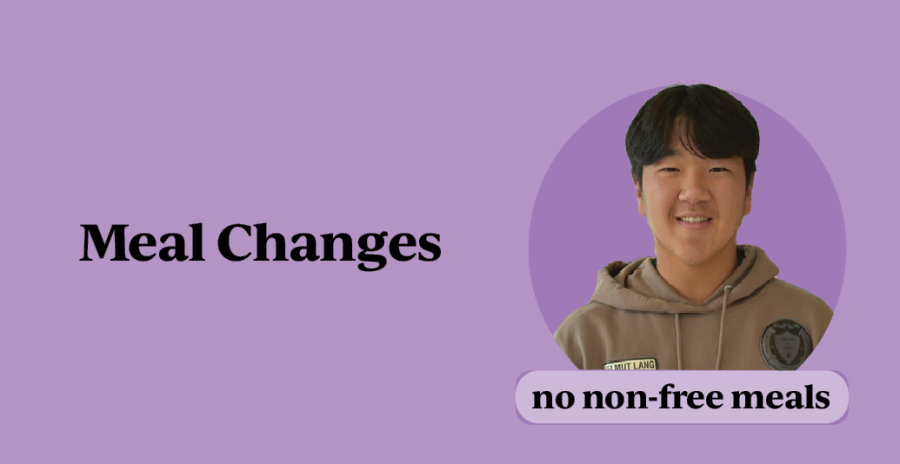Since the beginning of the pandemic, federal programs were implemented to allow students to gain access to free school lunches. These free school lunches were certainly convenient; students did not have to worry if they had enough money in their school account. The program warranted assurance for those going through a rough time during the pandemic; however, starting at the beginning of this school year, the pandemic-era federal program that made lunch and breakfast free for everyone is officially over. More than 26 million free meals were served every school day because of the program. Now, for the first time in two years, we’re left wondering what’s in store for these students who came to depend on the service.
Federal child nutrition waivers were offered as a form of COVID-19 relief starting in March 2020, enabling school districts in Indiana and across the country to give out free lunches and breakfasts, regardless of family income. The program ended June 30 after Congress declined to include another waiver extension in its March spending bill. With a new academic year underway, thousands of students across Indiana will have to go back to paying for lunch daily. This could possibly affect many families physically and economically. School nutrition advocates argue the end of pandemic-era free meals is likely to mean the return of student meal debt.
As a current high school student who has been through the pandemic and a student who only buys school lunches, the removal of the free lunch program has been a difficult adjustment. I grew used to the benefits of the free school lunches, which allowed for leisure in the lunch line where I could grab anything I pleased that day without the stress of being told, “you don’t have enough for that” from a lunch lady. Similarly, free school lunches seemed to benefit everybody. Studies show that eating well-rounded meals most of the time will help you study better, and lead to better results, both in the short-term and the long-term. The Centers for Disease Control and Prevention (CDC) reports that eating a healthy diet and being physically active not only can improve the health of students but also improve their academic achievement.
But with the removal of the program comes the potential resurgence of students who can’t afford to buy lunch. Yes, there are students who qualify for free and reduced lunch programs, but there may be many more students who live just outside of those qualifications who may be making difficult decisions about how to spend their limited funds. A free school lunch, while relatively small, may be just what those students need to be successful.
The views in this column do not necessarily reflect the views of the HiLite staff. Reach Eddie Sun at [email protected]
To view more of Eddie’s work, click here




























![Keep the New Gloves: Fighter Safety Is Non-Negotiable [opinion]](https://hilite.org/wp-content/uploads/2024/12/ufcglovescolumncover-1200x471.png)















































![Review: “Family By Choice” is the perfect watch that encapsulates family, love and everything in between [MUSE]](https://hilite.org/wp-content/uploads/2024/12/family-by-choice-1.png)
![Review: “A Phở Love Story” is an exceptional and authentic representation of teenage Vietnamese-Americans [MUSE]](https://hilite.org/wp-content/uploads/2024/12/a-pho-love-story-9781534441941_hr-786x1200.jpg)
![Review: “And the War Came” by Shakey Graves is the perfect year-round album [MUSE]](https://hilite.org/wp-content/uploads/2024/12/IMG_2665.jpeg)
![Review: "Abbott Elementary", a show I can watch with my family and truly enjoy [MUSE]](https://hilite.org/wp-content/uploads/2024/12/unnamed-1.png)
![Review: “We Live in Time” leaves you wanting more [MUSE]](https://hilite.org/wp-content/uploads/2024/12/IMG_6358.jpg)
![Review in Print: Maripaz Villar brings a delightfully unique style to the world of WEBTOON [MUSE]](https://hilite.org/wp-content/uploads/2023/12/maripazcover-1200x960.jpg)
![Review: “The Sword of Kaigen” is a masterpiece [MUSE]](https://hilite.org/wp-content/uploads/2023/11/Screenshot-2023-11-26-201051.png)
![Review: Gateron Oil Kings, great linear switches, okay price [MUSE]](https://hilite.org/wp-content/uploads/2023/11/Screenshot-2023-11-26-200553.png)
![Review: “A Haunting in Venice” is a significant improvement from other Agatha Christie adaptations [MUSE]](https://hilite.org/wp-content/uploads/2023/11/e7ee2938a6d422669771bce6d8088521.jpg)
![Review: A Thanksgiving story from elementary school, still just as interesting [MUSE]](https://hilite.org/wp-content/uploads/2023/11/Screenshot-2023-11-26-195514-987x1200.png)
![Review: "When I Fly Towards You", cute, uplifting youth drama [MUSE]](https://hilite.org/wp-content/uploads/2023/09/When-I-Fly-Towards-You-Chinese-drama.png)
![Postcards from Muse: Hawaii Travel Diary [MUSE]](https://hilite.org/wp-content/uploads/2023/09/My-project-1-1200x1200.jpg)
![Review: "Ladybug & Cat Noir: The Movie," departure from original show [MUSE]](https://hilite.org/wp-content/uploads/2023/09/Ladybug__Cat_Noir_-_The_Movie_poster.jpg)
![Review in Print: "Hidden Love" is the cute, uplifting drama everyone needs [MUSE]](https://hilite.org/wp-content/uploads/2023/09/hiddenlovecover-e1693597208225-1030x1200.png)
![Review in Print: "Heartstopper" is the heartwarming queer romance we all need [MUSE]](https://hilite.org/wp-content/uploads/2023/08/museheartstoppercover-1200x654.png)




